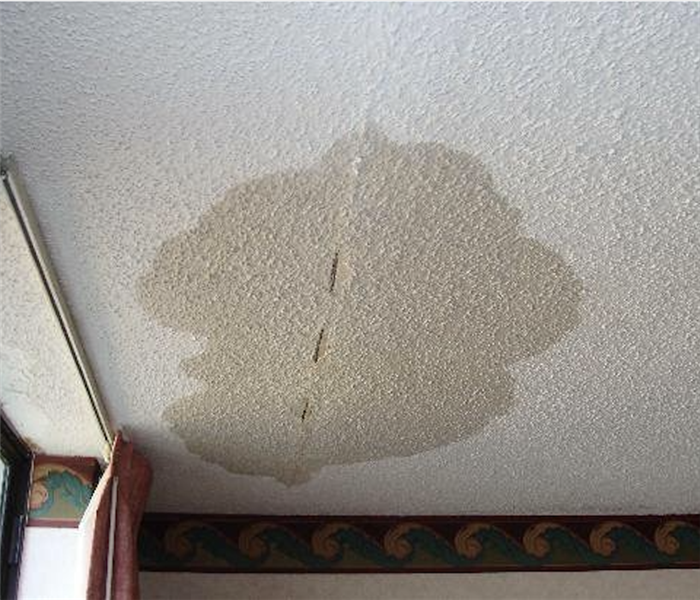A Serious Problem: A Leaky Roof
1/23/2023 (Permalink)
A roof leak is when water enters your home through the roof. While it may not sound serious, a roof leak can lead to mold and other potential hazards. Roof leaks are commonly caused by damaged and missing shingles, missing or worn-out flashings, and improperly flashing windows or skylights. Regardless of the reason for the roof leak, the leak can lead to mold, which can be problematic for the structure of the home.
How to Tell If Your Roof Is Leaking
To determine if your roof is leaking, here are some things to look for:
- Discoloration of the ceiling and/or walls. This can be caused by water that has run down a wall or dripped on a surface.
- Damp spots on ceilings or walls. If you are able to locate damp spots, use an absorbent cloth to dab up any remaining moisture from these areas.
- Water stains on ceilings and/or walls (indicates prolonged wetness). If you see water stains, look for additional signs of leakage such as discoloration in those areas. Water stains may also indicate mold growth behind drywall where it's difficult to access without damaging interior surfaces such as drywall and flooring.
Roof Leaks and Mold
Mold can cause structural damage to your roof. This means that mold is eating away at the wood and other material in your roof, causing it to rot. Mold can also cause a roof leak. If you find mold growing around where water collects on your roof, there's a very good chance that this is what caused the leak in the first place. Molds are also notorious for being able to eat through tar paper and shingles as well as some other types of materials used for roofs; if you see any type of discoloration or peeling on these surfaces then there's probably mold underneath those areas too!
Preventing Mold
Keep your roof clean. It's a good idea to have someone conduct an inspection of your roof every year, especially if it's made of a material that can easily become moldy (like wood). Make sure there aren't any leaks in the attic or other areas of the home. If you find one, get it fixed right away!
Clean out gutters and downspouts regularly so that water flows freely from them. This will help prevent water from pooling on the roof and leading to mold growth.
If possible, insulate your attic to keep moisture levels low inside of it. If you live in an area with high humidity during certain times of year—like summer—you may want to consider using a dehumidifier while sleeping or spending time indoors during these months as well; this will help keep air circulating freely throughout your home instead of trapping moisture inside walls where it might cause problems later down the road!
Talk to an expert about your roof's overall condition.
The best way to figure out if you have a mold problem on your roof is to have an expert inspect it. Make sure that you hire someone who can take samples of the mold and evaluate them for potential health risks. If there are any signs that the mold could be toxic, call in professionals who specialize in cleaning up contaminated buildings, like SERVPRO of Ebensburg, as soon as possible.
While leaks in your Ebensburg home can be a source of stress, it’s important to remember that you don’t have to deal with them alone. Our expert team is here to help! If you suspect that your roof is leaking or has developed a leak, give us a call today!




 24/7 Emergency Service
24/7 Emergency Service
